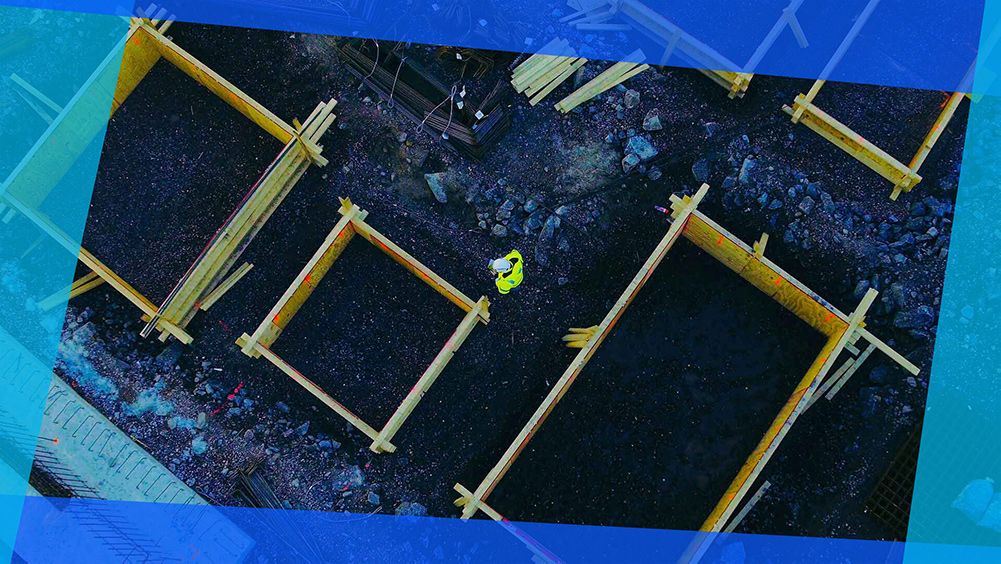Today’s construction industry is one of the most affected industries when it comes to workplace accidents. It is a work environment where you handle large machinery, dangerous chemicals, and work at heights or in confined spaces. It is important to always stay ahead on the latest HSE procedures and documentation, as well as performing safety inspections. These efforts can significantly reduce the risk of accidents.
Digital HSE tools are slowly finding their way into craftsmen’s and construction company’s toolbox. With an increasing trend towards digitalization both from legislation, industry organizations and the craftsmen, their final goal is to reduce accidents and create a safer work environment.
Who is responsible for creating a safe working environment on the construction site?
- In Finland the legal responsibility for this often lies with the contractor managing construction project and the main contractor’s employees involved in the project.
- In Sweden at the beginning of the construction project the property developer takes main responsibility, but after site work starts, it is delegated to the main contractor.
- In Norway the legal responsibility lies with the property developer (Byggherre) throughout the whole building process.
Easier access to documentation for craftsmen
Storing all the safety instructions and documentation in physical folders that are cumbersome to update, and this is not ideal. During a building project where changes happen quickly on the construction site, it’s crucial that the construction companies can at short notice keep in compliance with the legislation and demands set by the regulators.
With digital tools, craftsmen now have digital folders that are easily accessible on a computer, or through an app on a smartphone. All the documentation is stored securely in one place and updates can quickly be implemented. With useful functions such as reading confirmation, it’s easy to get an overview of which employees have read the latest changes updated on the project.
Safety inspections for construction companies
Safety on a construction site depends on many different factors. Some of the common methods to improve safety include audits, procedures, training and continuous improvement in methods of working. Most of these means are pre-emptive by nature. Finnish legislation forces construction sites to perform specific safety measurement at the sites on a weekly basis. In Sweden and Norway legislation requires to perform safety rounds regularly, but it’s not specifying how often.
One can assume that riskier environment requires to be inspected more often. In all cases, safety inspections are meant to be a pre-emptive action to both prevent potential safety hazards and to make sure that site workers get notified about the risks at the site.
Before digital tools safety inspections were handled by pen and paper. Even though checklists are freely accessible online, one needs to print them out, analyze results and generate reports. As a result, the time spent on preparations and safety inspections is much longer, also analyzing and preparing reports is more challenging.
What are the advantages of digital tools during safety rounds and inspections?
- customized safety check lists to fit any type of project with photos
- observations made directly in app and reports generated automatically
- real-time data sharing and access to evaluate risks and make improvements in time
- storing and learning from previous data from worksite to worksite
- deviations can quickly be made with photos and push notifications are instantly sent to alert managers
Everyone can contribute
The most important driver to a zero-incident site is attitude and collaboration. Not only the site managers or safety responsible needs to contribute to minimizing risks and reporting dangerous hazards, all employees or even regular people passing by the construction site can contribute to safety culture. Safety notes can be uploaded in Congrid software by scanning QR code and submitting observations anonymously. All you need is a phone.
“No matter how good the tools are, they will not make a zero-safety incident site. It always comes down to the people using the tools and their attitude towards safety. We at SmartCraft would like to see as many zero incident sites as possible and are willing to help in that respect, but it is up to the industry to make this part of the culture”, Country Manager SmartCraft Finland, Timo Makkonen.
The trend is towards digitalization
Nordic construction sites are much safer today than they were in the 90s. One big reason is the increase in safety awareness as well as safety culture.
Per now there are no demand to use a digital tool for safety work, but there are only a few years back that the demand for a paper system was removed in Norway. So, the trend is towards digitalization.
See how you can improve your safety with our digital tools here.





